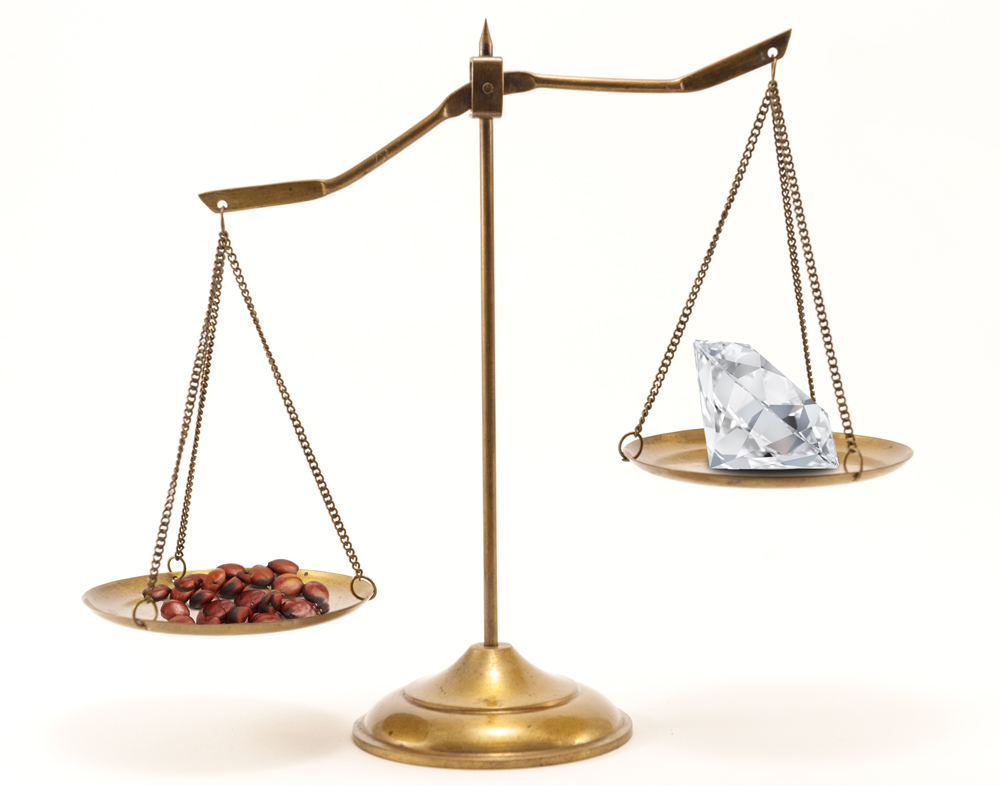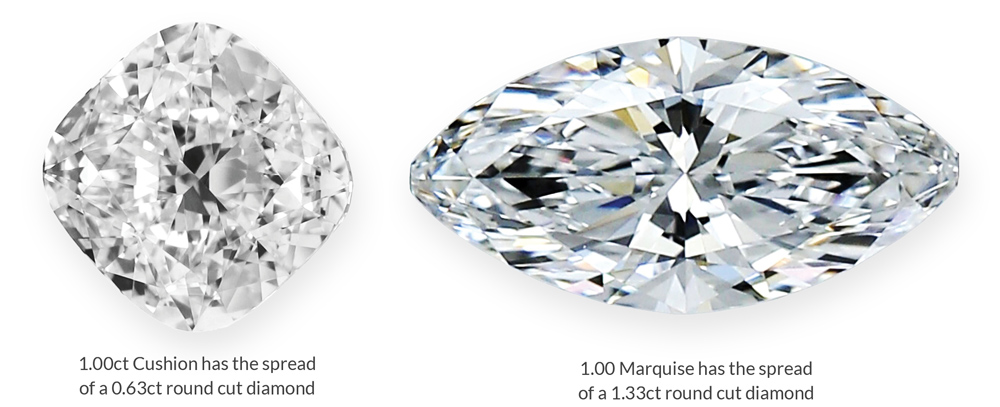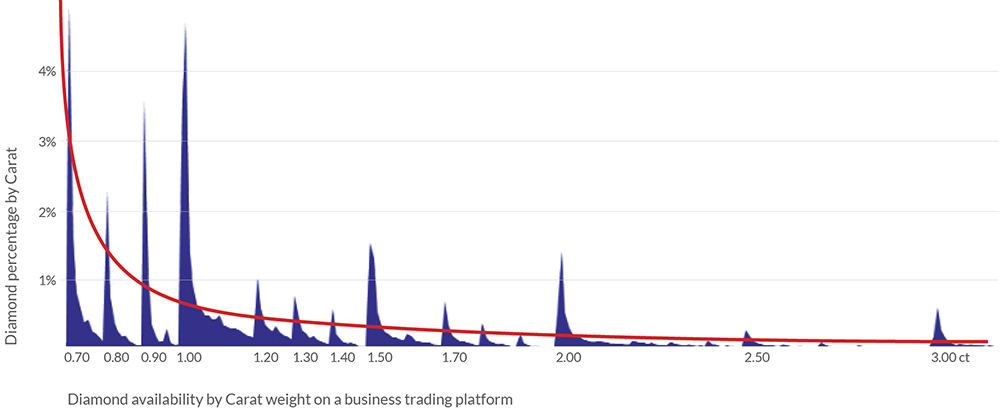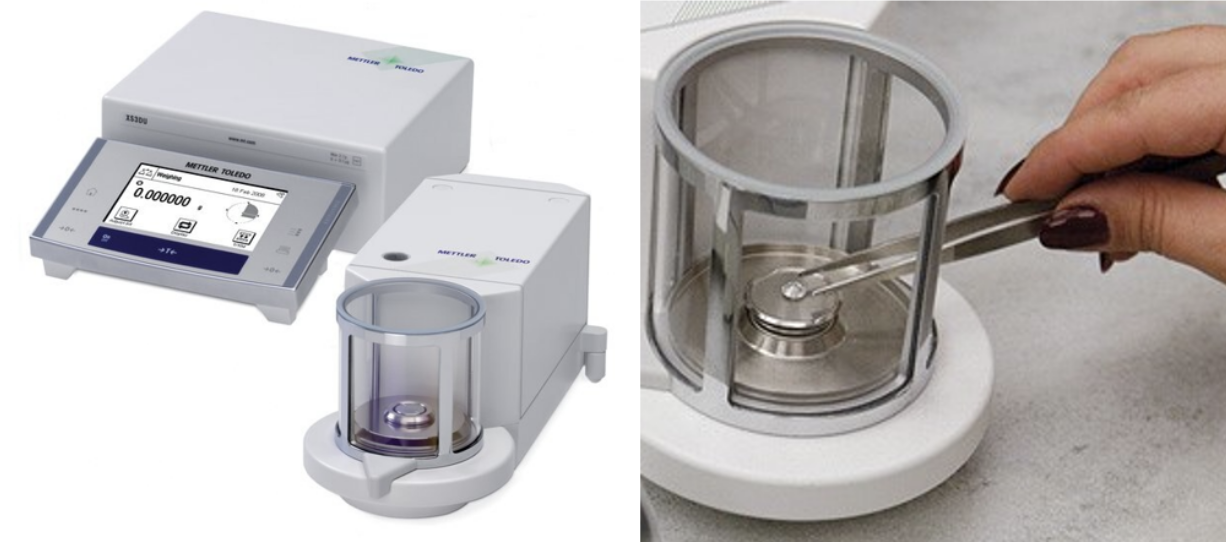Learn: Diamonds > Carat Weight
Introduction
Carat
Magic Carat Weights
Size Versus Weight
Study of GIA XXX Top Cut
Carat Weight
Myths & Facts
1. A diamond’s size is measured in carats:
Wrong. Carats are weight. Most diamonds are too small for their carat weight
2. A 2ct diamond costs a bit more than twice as much as 1ct:
No. A 2ct diamond costs twice as much per carat so it costs 4 times as much
3. A 0.995ct diamond is rounded up to 1.00ct:
No. It is a 0.99ct, a 0.999ct is rounded up.

The carat weight of diamonds and other gemstones was historically based on the carob seed. There were 23 standards ranging from 0.187 to 0.216 gram.
Today’s metric carat of 0.2 gram was established in Paris in 1907 and adopted in the US in 1913.
Read on for all the answers
Diamond 5 Carats = 1.00 gram. There are 100 points in a carat
Carat is not size or measurement, its weight. Weight has the biggest impact on cost.
Diamonds can measure or ’spread’ as much as a third larger or a third smaller than the optimum SIZE for any given carat weight.
This means it is possible to find diamonds, as shown below, that vary in size by more than double (or half).
How can you choose the right carat to save you money?
Carat
Doubling the carat weight quadruples the cost, or 2xCt=4x$’s, or 1/2 carat weight = ¼ the price. We like to mention that in different ways because so few people get it!
Carat weight is the critical cost factor: Carats cost more than the other 3C’s colour clarity or cut.
You may have been convinced diamonds are not rare. Wrong, there are 100 times more diamonds of less weight than one carat than all those heavier than a carat. Some other gems come in crystals heavier than a tonne, and they get cut up into wearable sizes. Cutters try to squeeze the heaviest diamond out of each crystal because that’s where the money is.
Let this sink in: Four ½ carat diamonds cost the same amount of money as a single 1 carat diamond.

Both these diamonds weigh 1.00ct but their face up spreads are vastly different. They are shown to scale.
Magic Carat Weights
The price of diamonds does not rise in a smooth exponential way. And as shown on the chart, they are not all cut with a cookie-cutter approach. At round numbers, there are big jumps in availability, with almost no diamonds at 0.99ct, 1.49ct and 1.99ct.
This is because at each round number there is a huge price jump.
And as we will explain a 0.001ct slip by a polisher is all that it takes to get into big trouble with the boss. Giving a 0.99ct diamond as a gift, which is how most diamonds are acquired, is very clever, but a sure way to become a lonely person.
A 0.90 carat diamond is a lot cheaper than a one-carat diamond, not 10% cheaper, it costs a third less, all factors being equal. Everybody wants to brag, “I gave a 1-carat diamond”, “I got a 2ct diamond”! Most people can only ever remember the carat weight of their diamond – rarely the color or clarity grade.
A 0.90ct diamond costs 22% less than a badly cut deep 1.00ct
diamond of the same size spread.

THE RED LINE is the natural Distribution.
THE BLUE PEAKS show most diamonds are cut to be heavier than nature prescribed.
SUMMARY:
Rough diamonds are cut to save weight. Diamonds of twice the weight cost 4 times more. Cut is a bargain if you know how to chose wisely.
Size versus weight
If you compare two diamonds of the same size or dimensions, but one weighs less, the lighter one will usually ‘talk to you with’ more sparkle. Do this in various types of lightings and you will notice the one with the lower carat weight also appears to be larger, especially in dim lighting like under a desk. That extra weight hidden in the depth kills the beauty and sparkle. We focus a lot on this. In the sections on Cut Quality, we introduce tools and methods to get the best for the least outlay.
The vast majority of all diamonds are smaller in millimeters than they should be for their carat weight. More than 80% of GIA’s top cut quality round diamonds and 90% of all fancy shapes of diamonds are smaller than optimum.

Diamond cutters make more money cutting this rough diamond into a dull drab 1.00 carat stone. It could be polished into a sparkly 78 pointer that looks bigger and costs you less.
Study of GIA xxx Top Cut D-F
In March 2021 Gary Holloway conducted a small study of GIA XXX round top cut D-F VS2 1.00ct diamonds listed on RapNet™. There were 325 in total. 102 had tables that he considers too large, more than 30%. 176 had depths greater than 62.3% which ensures the diameter or spread will be too small. That left 40. Of the 40, 14 scored greater than 2.0 on Holloway Cut Adviser or HCA leaving 26 possible candidates out of 326 or less than 8% worthy of further investigation. Some of those would likely be rejected for clarity reasons, especially for reduced transparency related to Clouds or Internal Graining. The end result Garry typically rejects 95% of all the diamonds and only considers diamonds from companies that supply lots of images and information.
Ideally, this shouldn’t happen. The Gemological Institute of America (GIA), conducted a survey on cut quality to establish their Cut grading system – which was terrific. But they did this by showing a master set of stones to diamond dealers using a lightbox built for traveling but badly designed for the purpose. They let the foxes into the henhouse!

GIA and other better labs weigh diamonds to the fourth decimal place on very accurate scales. The convention in the diamond industry is to round-up from the third decimal place from 0.009 rather than the usual 0.005. So a 0.995 carat diamond is 0.99ct and a 0.999ct diamond weighs 1.00ct.
